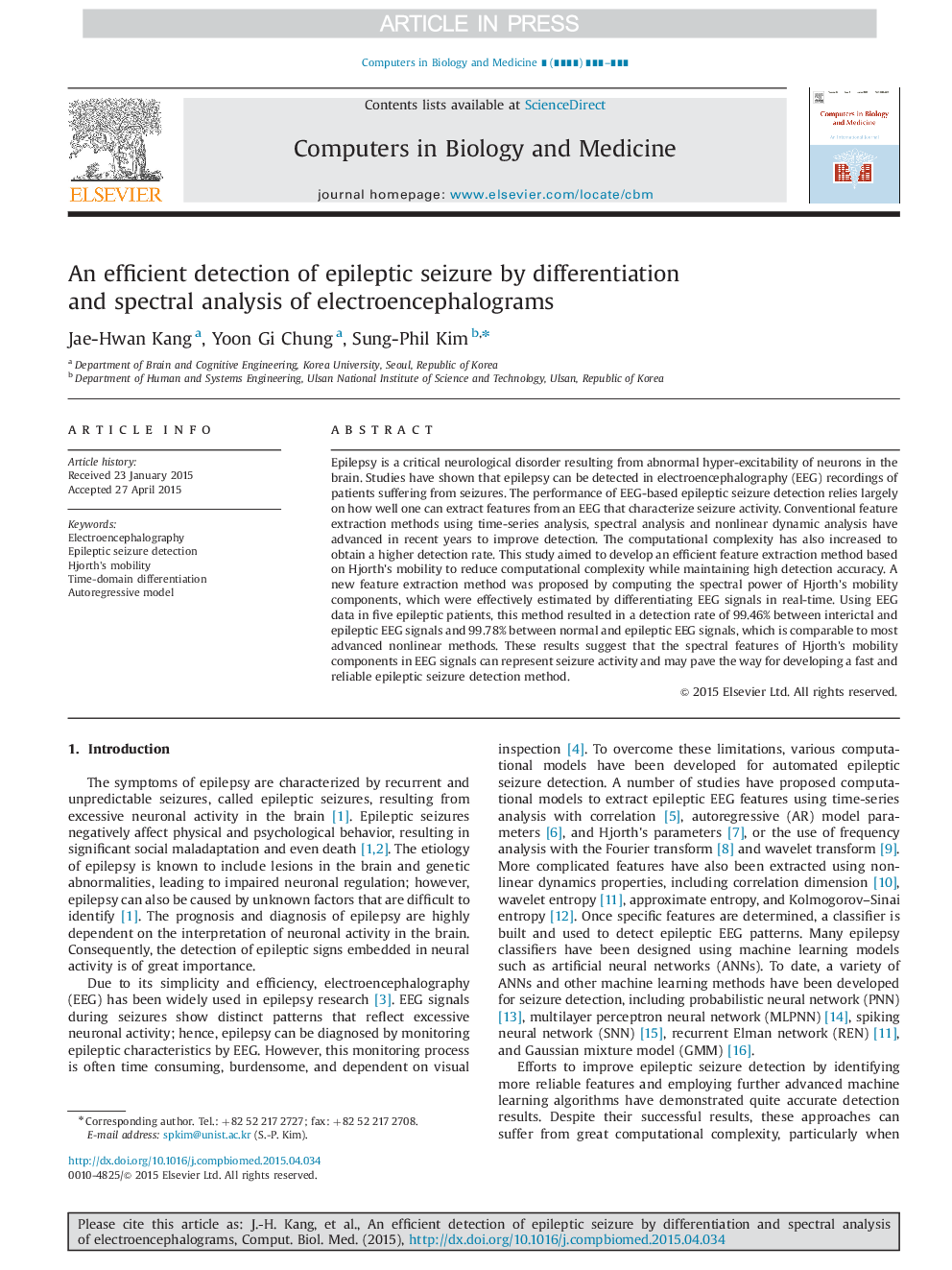| Article ID | Journal | Published Year | Pages | File Type |
|---|---|---|---|---|
| 6921065 | Computers in Biology and Medicine | 2015 | 5 Pages |
Abstract
Epilepsy is a critical neurological disorder resulting from abnormal hyper-excitability of neurons in the brain. Studies have shown that epilepsy can be detected in electroencephalography (EEG) recordings of patients suffering from seizures. The performance of EEG-based epileptic seizure detection relies largely on how well one can extract features from an EEG that characterize seizure activity. Conventional feature extraction methods using time-series analysis, spectral analysis and nonlinear dynamic analysis have advanced in recent years to improve detection. The computational complexity has also increased to obtain a higher detection rate. This study aimed to develop an efficient feature extraction method based on Hjorth׳s mobility to reduce computational complexity while maintaining high detection accuracy. A new feature extraction method was proposed by computing the spectral power of Hjorth׳s mobility components, which were effectively estimated by differentiating EEG signals in real-time. Using EEG data in five epileptic patients, this method resulted in a detection rate of 99.46% between interictal and epileptic EEG signals and 99.78% between normal and epileptic EEG signals, which is comparable to most advanced nonlinear methods. These results suggest that the spectral features of Hjorth׳s mobility components in EEG signals can represent seizure activity and may pave the way for developing a fast and reliable epileptic seizure detection method.
Related Topics
Physical Sciences and Engineering
Computer Science
Computer Science Applications
Authors
Jae-Hwan Kang, Yoon Gi Chung, Sung-Phil Kim,
